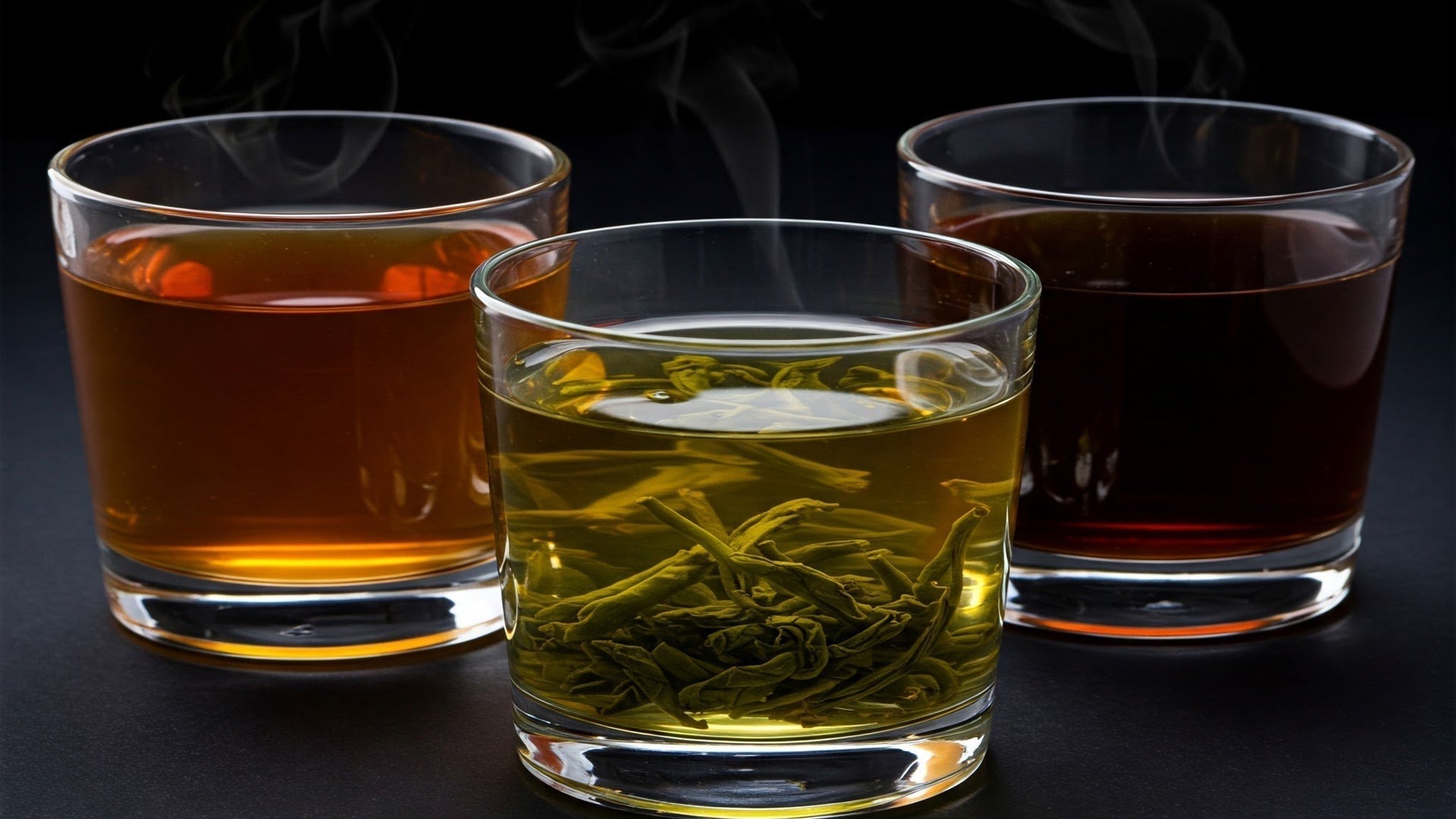Oolong, Green, or Black? How to Find the Tea That’s Right for You

With thousands of teas to choose from, the search for the right one can feel overwhelming. Yet each choice carries weight, shaping the rhythm of your day. A brisk, bold cup can launch the morning with energy. A lighter infusion may give you a calming pause in the afternoon. A complex tea that reveals itself slowly across multiple steeps can become a ritual to savor when you have time to linger.
Oolong, green, and black teas are among the most celebrated categories, and though they all come from the same plant—Camellia sinensis—their character could not be more varied. What sets them apart is what happens after harvest. The level of oxidation, the processing style, and the craft behind shaping the leaves create remarkable differences in flavor, aroma, and even the way each cup affects the body. Understanding these distinctions makes it easier to choose the tea that fits both your mood and your moment.
The Differences in Oxidation
Green tea is the least oxidized, a process that preserves its natural green hue and keeps its flavors bright, fresh, and often grassy or vegetal. It typically carries a light-to-moderate caffeine content, making it gentle enough for daily drinking.
Oolong tea sits in the middle, partially oxidized and known for its versatility. Within this category you find teas that range from delicate and floral to rich, roasted, and toasty. Oolongs often carry moderate caffeine and are prized for their ability to be re-steeped many times, revealing new dimensions with each infusion.
Black tea is the most oxidized, producing darker leaves, bolder flavors, and stronger caffeine. Its depth is malty, robust, and often comforting, making it a favorite for those who want a more assertive cup.
It is worth noting that the words “oxidized” and “fermented” are sometimes used interchangeably in tea discussions, though they do not mean the same thing. Oxidation refers to the controlled exposure of leaves to oxygen, while true fermentation involves microbial activity. Only dark teas such as puerh and liu bao undergo actual fermentation.
Green Tea: Freshness in the Cup
Green tea is best for those who enjoy clean, light flavors and a gentle caffeine lift. Because it is minimally oxidized, it retains a concentration of antioxidants and a vibrant character that can range from sweet and grassy to rich and savory, depending on the origin and style.
Portman’s Aged Midori Green Tea offers a bright, vegetal profile with a hint of seaweed, while Autumn Hojicha provides a roasty, comforting, distinctly seasonal character. Green tea is especially well suited for mornings or early afternoons, when you want focus and clarity without overstimulation. It brews best with cooler water, around 160–180°F (70–82°C), and a short steep that avoids bitterness while highlighting freshness.
Oolong Tea: The Shape-Shifter
Oolong is ideal for those who love complexity and the pleasure of tasting how a tea evolves with each infusion. Positioned between green and black teas in oxidation, it offers extraordinary range. Light oolongs can be as floral as a spring garden, while darker, roasted varieties deliver nutty, caramel, or toasty notes.
Portman’s Four Seasons Oolong captures floral brightness and aroma, while Taiwanese Red Oolong leans toward honey sweetness and a rounded body. Many oolongs can be steeped five to ten times, shifting character each time water touches the leaves. This makes oolong an endlessly rewarding choice, suitable for mornings, afternoons, or evenings depending on the style you choose. For the fullest experience, brew in multiple short infusions and notice how the flavor arc unfolds.
Black Tea: Bold and Resolute
Black tea speaks to those who want a strong, full-bodied cup and the most caffeine of the three. Through full oxidation, the leaves take on a deeper color and a taste that is malty, brisk, and resolute. While many people enjoy black tea with milk or sweeteners, high-quality leaves carry enough complexity to stand beautifully on their own.
Portman’s Vietnamese Black Tea is a fine example, offering rich aroma and a strong malty character that holds up well in the morning. With water just off the boil and a steep of three to five minutes, it provides balanced strength without harshness, making it a satisfying alternative to coffee.
Choosing the Tea That Fits You
If freshness and lightness appeal to you, green tea will give clarity without weighing you down. If you are drawn to variety and want to explore shifting flavors across multiple cups, oolong offers discovery at every turn. If you prefer strength, depth, and a sense of comfort, black tea delivers a steady anchor for your day.
The Final Word
The best tea is the one that meets you where you are, both in taste and in rhythm. Green tea refreshes and uplifts, oolong invites curiosity and exploration, and black tea provides energy and grounding. Whichever path you choose, take time to brew with care, breathe in the aroma before sipping, and let the cup become part of the texture of your day.
